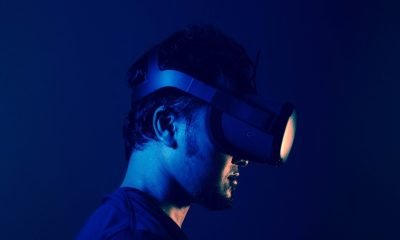Artificial Intelligence
Integrating Brain Activity Measurement With Virtual Reality

At The University of Texas at Austin, a group of pioneering researchers have successfully modified a commercial virtual reality (VR) headset to include a non-invasive method of measuring brain activity. This innovative venture offers unprecedented insights into how humans process various stimuli in immersive VR environments, ranging from basic hints to more intense stressors.
A Seamless Blend of VR and EEG Technology
The heart of this innovation lies in the integration of an electroencephalogram (EEG) sensor within a Meta VR headset. EEGs, as we know, gauge the brain's electrical activity. When combined with the immersive experience of VR, it provides a detailed view of neural reactions to various VR-induced stimuli.
“Virtual reality is so much more immersive than just doing something on a big screen,” highlighted Nanshu Lu, the lead researcher and professor at the Cockrell School of Engineering. “It gives the user a more realistic experience, and our technology enables us to get better measurements of how the brain is reacting to that environment.”
The research, which has been published in Soft Science, sets itself apart from the contemporary commercial market. While EEG and VR integrations are not new, existing devices are exorbitantly priced. In contrast, the EEG electrodes developed by the UT Austin team prioritize user comfort, allowing for prolonged use and broadening the scope for potential applications.
Most commercial EEG solutions involve wearing a cap inundated with electrodes. However, these are incompatible with VR headsets. Furthermore, conventional electrodes often face challenges in establishing a connection with the scalp due to hair obstruction. The research team addressed this concern innovatively. Hongbian Li, a key member of Lu's lab, commented, “All of these mainstream options have significant flaws that we tried to overcome with our system.”
Li spearheaded the development of a unique spongy electrode composed of soft, conductive materials to combat these challenges. This re-engineered headset boasts of electrodes embedded within the top strap and forehead pad, a flexible circuit reminiscent of Lu's electronic tattoos, and an EEG recording device situated at the rear.
Broadening Horizons: Robots, Humans, and VR
The implications of this groundbreaking technology are far-reaching. One notable application is its incorporation into a large-scale human-robot interaction study at UT Austin. Here, individuals can view events from the robot's vantage point using the VR headset, with the added advantage of measuring the cognitive load during extended observation periods.
Luis Sentis, another stalwart involved in the robot delivery project, stated, “If you can see through the eyes of the robot, it paints a clearer picture of how people are reacting to it and lets operators monitor their safety in case of potential accidents.”
To assess the potential of their invention, the researchers introduced a VR game. Collaborating with brain-machine interface specialist José del R. Millán, they devised a driving simulation that evaluates how attentively users process and respond to turn commands, with the EEG meticulously recording the brain activity throughout.
With a preliminary patent application already submitted, the team is poised to revolutionize the VR and EEG industry, actively seeking partnerships to further refine and expand their remarkable technology.











